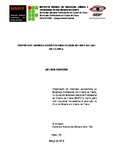Proposta de um modelo didático para estudar as fases da lua e os eclipses

Visualizar/
Data
2016-03-23Autor
Barbosa, Jaelson
http://lattes.cnpq.br/5446014599570564
Metadado
Mostrar registro completoResumo
In the study of the moon phases and eclipses there are research papers showing the existence of conceptual errors in the cognitive structure of high school students, as well as among teachers, taking them to alternative conceptions about the explanations of these phenomena. A large number of these alternativeconceptions are originated from everyday experience and they are pervaded with common language, with few deep thinking and critical procedures. This study aims to diagnose the alternative conceptions and provoke in students the cognitive conflict about the phenomena of formation of the moon phases and eclipses through our educational product. The usage of a didactic model that represents the Earth-Moon-Sun system is a powerful tool in the transposition of the knowledge to teach to the knowledge taught. Our theoretical framework is based on the interactionist and constructivist theory of Jean Piaget (equilibration theory) and in the didactic transposition of knowledge. The efficiency of our educational product, in relation to learning in the classroom, was assessed through a questionnaire (post-test). The results showed, through graphs, the advance in the cognitive structure of the students who participated in the research.



